About the Series
Starting 10 October, WILDLABS and the Satellite Applications Catapult are proud to announce our new virtual course: Earth Observation 101. This four-part lecture series from Dr Cristian Rossi explores the technologies and the algorithms behind remote sensing and gives an overview of several applications using RS data, including practicalities about data access and processing.
Are you new to Remote Sensing, or want to know more about the applications of the technology? Then this series is for you! This series will give you the practical knowledge base you need to understand the current state of Earth Observation for Conservation and where the field is headed.
Remote Sensing (RS) is the science of obtaining information about the Earth’s physical, chemical, and biological systems without physical contact. It employs sensors that measure the electromagnetic radiation which interacts with land, ocean, and atmosphere. It is used in a diverse set of applications, such as forestry, agriculture, geology, hydrology, archaeology, meteorology, oceanography, zoology, glaciology, and many other disciplines.
RS history dates back over 200 years, with the first photographs capturing landscapes from balloons, kites and even pigeons. Many years later the systematic use of this technology was deployed for surveillance purposes during the two world wars. With rapid scientific progress, the global utilisation of this technology was finally reached in the 70s, with the development of satellites orbiting around the Earth and the establishment of several space agency programmes that provide useful data for research and development. Nowadays, many commercial companies own satellite constellations and the combined data availability from public and private sources is hitting global coverage with hourly acquisitions. This lecture series explores the technologies and the algorithms behind remote sensing and gives an overview of several applications using RS data, including practicalities about data access and processing.
This lecture series is free and allows you to move at your own pace with videos available to all on the WILDLABS YouTube channel. Course content will also be posted in this group so you can navigate through all the content, engage with other participants, and reach out to the course instructor directly.
To join this virtual course, register here!
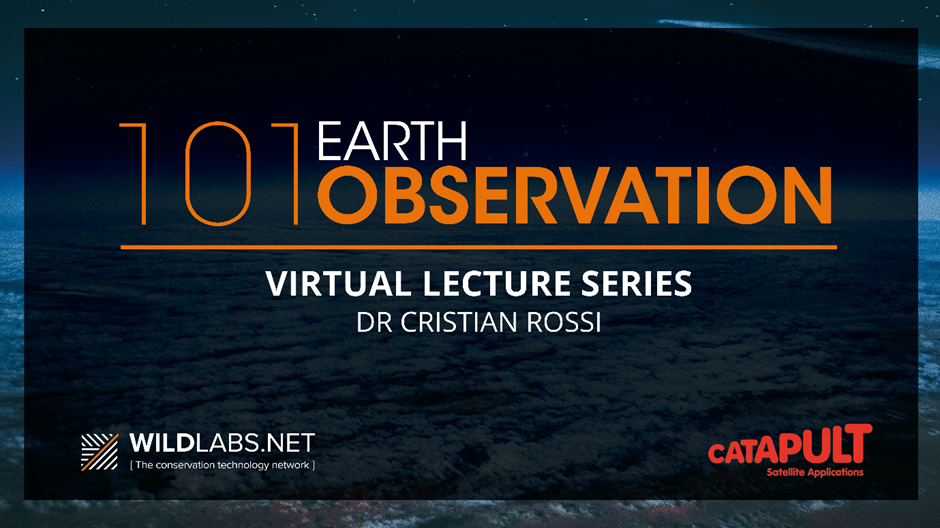
The Series Schedule
- Part 1: How does it work? (10 October)
The first part of the lecture series is focused on exploring the physical fundamentals of the main two earth observation technologies: optical and radar. We will cover the remote sensing process, from data acquisition to result presentation; the main theoretical concept behind remote sensing imaging, i.e. the electromagnetic spectrum; and we finally will explore the basic properties of optical and radar imagery. - Part 2: What can it do? (17 October)
The second part of the lecture series is dedicated to present an overview of many applications where remote sensing data has been used. After a general overview, we will enter more in detail into applications using optical data, with an introduction to vegetation mapping, and finally into radar applications, where we describe the complementarity of these two technologies. - Part 3: How is it being used? (24 October)
The third part of the lecture series covers two specific case studies: an environmental one, i.e. the search for lithium in Cornwall, and a conservation one, i.e. the monitoring of wildlife corridors. The case studies are covered in depth, with a description of the remote sensing process behind them. - Part 4: How do I get started? (31 October)
The last part of the lecture series is the practical one. We will discover how to access earth observation data from both public and commercial providers; we will describe in detail the main public satellite missions; we will discover existing products generated with earth observation data and finally we will briefly describe available tools and platform for data processing.
Meet your course instructor
Dr Cristian Rossi - Satellite Applications Catapult & University of Oxford
Cristian Rossi received the B.Sc. and M.Sc. degrees in telecommunication engineering from the Polytechnic of Milan, Italy and the Ph.D. degree in remote sensing technology from the Technical University of Munich, Germany. He is currently the Geospatial Science Lead at the Satellite Applications Catapult, where he is coordinating with research and academic communities to ensure pull through of science to support organisation activities and he is technically leading several national and international projects focused on the exploitation of remote sensing data for land and ocean applications.
Among his other tasks, Cristian is also responsible of teaching about Earth observation data and algorithms through courses and seminars for industry and academia at all levels and he regularly supports business development and government operations. He is a Visiting Lecturer at the University of Oxford, and he is supervising data science PhD students. He is member of several scientific committees, including UKRI consultations for shaping future research funds, and several Centres for Doctoral Training steering boards. Before moving to the UK, he was a Research Scientist with the German Aerospace Center (DLR), where he was involved in the development of novel algorithms for Earth observation missions. His research interests are focused on data science for sustainable applications and climate change adaptation. He has authored or co-authored more than 90 publications in international journals, conferences, and book chapters.
No showcases have been added to this group yet.
Sustainability Manager for CERES Tag LTD. An animal health company; animal monitoring, conservation, & anti-poaching/ rural crime. Wildlife, livestock, equine & companion. #CeresTrace #CeresWild #CeresRanch



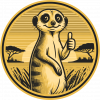

- 2 Resources
- 20 Discussions
- 23 Groups
- @Amanda83
- | She
I love to help out
- 0 Resources
- 1 Discussions
- 11 Groups
- @lampros
- | He/Him
I am a Data and Remote Sensing Analyst specializing in programming (R, Python) at Monopteryx, contributor to open-source projects related to machine-, deep-learning, remote sensing and interested in Biodiversity
- 0 Resources
- 4 Discussions
- 10 Groups

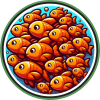
- 0 Resources
- 2 Discussions
- 8 Groups
- @srankin
- | she/her
NOAA Fisheries
Bioacoustics researcher with the National Oceanographic and Atmospheric Administration (NOAA).
- 0 Resources
- 2 Discussions
- 16 Groups
- 0 Resources
- 0 Discussions
- 3 Groups
- @AnnkathrinSharp
- | She/Her
Supporting FFI's Eastern Atlantic Islands Programme, working with local partner organisations in Cabo Verde and in Príncipe to develop & implement marine and terrestrial conservation efforts.

- 0 Resources
- 3 Discussions
- 1 Groups
Data Scientist
- 0 Resources
- 8 Discussions
- 12 Groups
- @Britneecheney
- | her/she
My name is Britnee Cheney. I am a keeper and trainer for three North American River Otters at an aquarium in Utah. I have recently started a conservation program for this species in the wild and am looking for resources and mentors to help me with my camera trapping.


- 0 Resources
- 13 Discussions
- 7 Groups
- @alekseisaunders
- | He/Him/His
Wildlife conservationist, ichthyologist, now pursuing a career in Software Engineering and Web Development

- 0 Resources
- 2 Discussions
- 4 Groups
- @Robincrocs
- | He/Him//El//Ele
Wildlife biologist, works with Caimans and Crocodiles
- 0 Resources
- 0 Discussions
- 15 Groups
PhD student at the University of Wuerzburg, working on the influence of climate change on animal migration, especially the Northern Bald Ibis.
- 1 Resources
- 0 Discussions
- 6 Groups
Earth Blox is growing — discover roles where your skills can help organisations make nature and sustainability part of everyday decisions.
4 July 2025
Fully funded 2 year position within a Biodiversa+ funded project
16 December 2024
The Connected Conservation is thrilled to announce our award's third round in collaboration with the Airbus Foundation. This award champions the use of cutting-edge satellite imagery to tackle biodiversity loss and...
30 September 2024
How businesses can use the framework to develop nature strategies and prepare disclosures for regulations such as CSRD.
12 June 2024
WildLabs will soon launch a 'Funding and Finance' group. What would be your wish list for such a group? Would you be interested in co-managing or otherwise helping out?
5 June 2024
Article
Read in detail about how to use The Inventory, our new living directory of conservation technology tools, organisations, and R&D projects.
1 May 2024
Article
The Inventory is your one-stop shop for conservation technology tools, organisations, and R&D projects. Start contributing to it now!
1 May 2024
Review by Professor Iain H Woodhouse
29 April 2024
Emerging trends for Nature-Based Solutions project assessments
8 March 2024
Join us to help prevent biodiversity loss! Understory is hiring a postdoc to lead R&D Development on generalizing Computer Vision models for vegetation identification across space/time/phenotypes.
29 February 2024
January 2024
December 2023
| Description | Activity | Replies | Groups | Updated |
|---|---|---|---|---|
| Hello WILDLABS Community, Ocean Science Analytics recently launched an ocean-focused course for those interested in learning how to... |
|
Geospatial, Conservation Tech Training and Education, Early Career, Earth Observation 101 Community | 5 days 23 hours ago | |
| Hi Jeremy, With a quick search I've found the paper linked below. It looks like equipments such as Livox MID are sufficient for plot-level analyses, but not for individual... |
|
Drones, Earth Observation 101 Community, Emerging Tech, Geospatial, Sensors | 2 years 4 months ago | |
| Hello EO101 community!We hope you have enjoyed the EO101 lecture series! With all four parts now available on the WILDLABS YouTube channel... |
|
Earth Observation 101 Community, Community Base | 2 years 9 months ago | |
| Hello EO101 Community!We'll be hosting a live chat on YouTube as part of our watch party of Part 4 on the WILDLABS YouTube channel.... |
|
Earth Observation 101 Community | 2 years 9 months ago | |
| Ok no problem! Let me know if you have trouble viewing one of the specific figures/diagrams clearly though and I can try reaching out to the speaker to see if they would be... |
|
Earth Observation 101 Community | 2 years 9 months ago | |
| Hello EO101 Community!We'll be hosting a live chat on YouTube as part of our watch party of Part 2 on the WILDLABS YouTube channel.... |
|
Earth Observation 101 Community | 2 years 9 months ago | |
| To start a completely new discussion, click the post button in the top menu then select the EO 101 community group to have the discussion appear here! |
|
Earth Observation 101 Community | 2 years 10 months ago | |
| Also this: "Earth observation for ecosystem accounting: spatially explicit national seagrass extent and carbon stock in Kenya, Tanzania, Mozambique and Madagascar" |
|
Earth Observation 101 Community | 2 years 10 months ago | |
| Hi Robin, you can watch full part 1 video after the premiere or the individual lectures anytime (details below)we have also set up a discussion thread if you have any comments or... |
|
Earth Observation 101 Community | 2 years 10 months ago | |
| For anyone interested we have decided to try a YouTube premiere for each part of the course. For the first part of the course visit our YouTube channel at 3:00pm BST on Monday 10... |
|
Earth Observation 101 Community | 2 years 10 months ago |
EO 101 Extra Credit: Interesting Papers & Resources (add your own)
10 October 2022 5:08pm
10 October 2022 5:28pm
Also this:
"Earth observation for ecosystem accounting: spatially explicit national seagrass extent and carbon stock in Kenya, Tanzania, Mozambique and Madagascar"
Welcome to the EO101 Virtual Lecture Series!
6 October 2022 11:23am
10 October 2022 2:29pm
Hi all
I am a sound designer, field recordist and electroacoustic composer, and I currently find myself in an job working events for Google; this has allowed me to learn a load about ML, CNNs etc. This has reignited my interest in PAM and ecoacoustics in general; I graduated with an MSc in Sound Design from Edinburgh Napier in 2018 and am looking to pursue research-based career options in teh scientific application of sound.
Also my mother worked in pest research through the 80s and 90s and was a GIS and remote sensing specialist so the subject is somewhat in my DNA.
Robin
10 October 2022 2:32pm
Unfortunately I am working on a live event at exactly the same time as this webcast, but I will catch up later if I may?
10 October 2022 3:00pm
Hi Robin, you can watch full part 1 video after the premiere or the individual lectures anytime (details below)
we have also set up a discussion thread if you have any comments or questions after watching:
Earth Observation 101 - Part 1: How does it work?
10 October 2022 2:05pm
Watch Party: Earth Observation 101
3 October 2022 2:59pm
3 October 2022 11:36pm
Interested! I'm in EST (east coast of the US).
6 October 2022 4:13pm
For anyone interested we have decided to try a YouTube premiere for each part of the course. For the first part of the course visit our YouTube channel at 3:00pm BST on Monday 10 October to join a live chat and watch along with other participants. The video will then be available to watch anytime.
Earth Observation 101 - Part 4: How do I get started?
30 September 2022 11:48am
Earth Observation 101 - Part 3: How is it being used?
30 September 2022 11:14am
Earth Observation 101 - Part 2: What can it do?
30 September 2022 10:50am
Earth Observation 101 - Part 1: How does it work?
30 September 2022 10:31am
Earth Observation 101 Virtual Course
30 September 2022 10:05am
3 October 2022 9:45am
3 October 2022 10:01am
5 October 2022 2:13pm
Catch Up with the Variety Hour: October 2022
22 September 2022 1:59pm



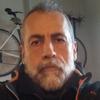
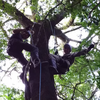
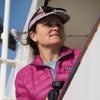

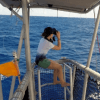


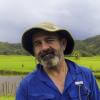
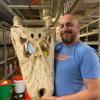

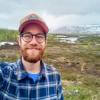


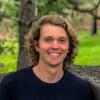


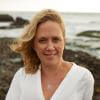
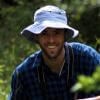
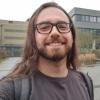

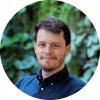




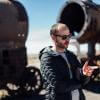

10 October 2022 5:20pm
Just came across this: